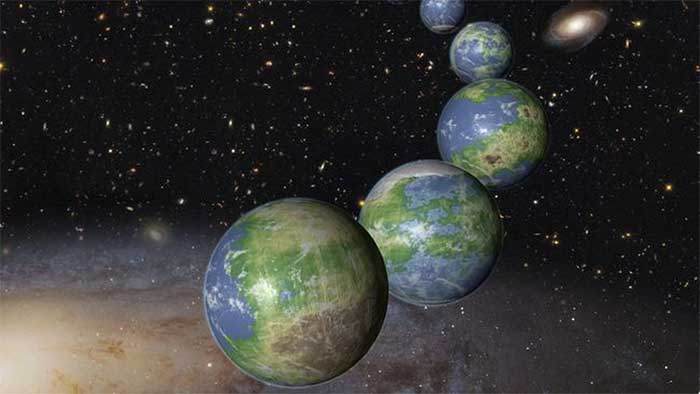Scientists declare that a planet must contain at least 18% oxygen to facilitate the development of advanced technological civilizations.
After centuries of exploration, humanity’s search for extraterrestrial life remains stalled, as we have yet to discover any organisms or the foundations of life beyond Earth.

New research shows that Earth-like planets need an atmosphere containing at least 18% oxygen for intelligent life to develop. (Image: NASA/ESA).
According to scientists, one of the core factors making this challenging is the oxygen level in the atmospheres of planets. To support life and technology, planets need to have an ample supply of oxygen.
However, this oxygen is not solely for respiration as one might assume; rather, it is essential for combustion.
In a recent study, Adam Frank, a professor of physics and astronomy at the University of Rochester (USA), argues that a planet’s atmosphere must contain at least 18% oxygen to foster technological civilization.
“You can have biology, and you might even have intelligent organisms – in a world without oxygen,” said Prof. Frank. “But without a source of fire, you will never develop higher technology because advanced technology requires fuel and melting.”
Prof. Frank describes the 18% level as the “oxygen choke point” that could hinder intelligent life from developing complex technologies detectable through radio signals.
This concept aligns with other bottlenecks scientists discuss in the search for extraterrestrial life, including the bottleneck affecting the evolution of multicellular life, the bottleneck related to the development of tool-using intelligence, and the bottleneck determining whether an alien society can avoid self-destruction.
Together, these form the “great filter” – a concept introduced by economists and futurists to describe a series of barriers to the development of extraterrestrial life, explaining why the search for life is so challenging.

The lack of oxygen will prevent extraterrestrial civilizations from developing advanced technology, making it difficult to “communicate” with them. (Image: Getty).
According to Associate Professor of Astronomy Amedeo Balbi at the University of Roma Tor Vergata (Italy), exoplanets with oxygen levels below 18% will not be able to sustain combustion of outdoor materials for extended periods.
This limitation would hinder metallurgical activities and the burning of fossil fuels. While this might lead to a threatened environment, it is essential for maintaining any kind of industrial base.
Prof. Balbi suggests that humans should prioritize targeting planets with high oxygen levels, as the presence of such levels in exoplanetary atmospheres could be a key clue in the search for extraterrestrial civilizations.
On Earth, our atmosphere boasts an oxygen level of 21%. However, during its early formation, Earth’s atmosphere primarily consisted of nitrogen and carbon dioxide.
Starting around 2.4 billion years ago, the abundance of molecular oxygen in our planet’s atmosphere began to rise significantly.
This increase is believed to be due to the evolution of cyanobacteria, which produced oxygen as a waste product. However, the rising oxygen levels also harmed anaerobic life forms of that time, as oxygen reduced the levels of hydrogen sulfide and methane necessary for their survival.
Thus, the emergence of excess oxygen in Earth’s atmosphere is sometimes referred to as the “oxygen catastrophe” because it led to the extinction of many microbial species.


















































